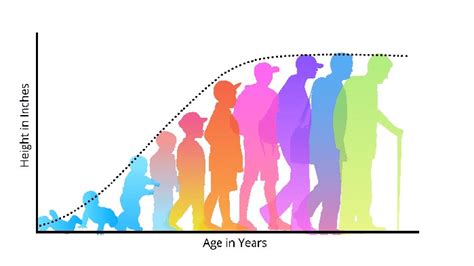
A simple balance test, specifically the one-leg stand, may offer insights into a person’s lifespan, according to research published in the British Journal of Sports Medicine. The study suggests that the ability to stand on one leg for 10 seconds is correlated with overall survival in middle-aged and older adults, providing a quick, albeit potentially challenging, assessment of physical stability and health.
The ability to stand unsupported on one leg for ten seconds is associated with a significantly reduced risk of mortality in adults aged 51 to 75, researchers have found. This simple balance test, highlighted in a study published in the British Journal of Sports Medicine, offers a potentially valuable tool for assessing physical health and predicting longevity. While the study establishes a correlation, it is essential to note that it doesn’t prove causation, and other health and lifestyle factors significantly contribute to lifespan.
The research team, led by Dr. Claudio Gil Araujo from the Exercise Medicine Clinic – CLINIMEX in Rio de Janeiro, Brazil, tracked 1,702 participants between the ages of 51 and 75 from 2009 to 2020. During the initial assessment, participants were asked to stand on one leg for ten seconds without any additional support. Each participant was allowed up to three attempts on either foot. Roughly 20% of the participants failed the test. Over the course of the study, 123 participants died from various causes. Statistical analysis revealed that those who couldn’t complete the 10-second one-leg stand had a significantly higher risk of mortality compared to those who could. The inability to perform the test was associated with an 84% increased risk of death from any cause during the study period. The study controlled for factors such as age, sex, and underlying health conditions to isolate the impact of balance on mortality risk.
Dr. Araujo and his colleagues emphasized that the one-leg stand test provides a straightforward and objective measure of balance, which typically declines with age. Good balance is crucial for performing daily activities such as walking, climbing stairs, and getting in and out of a car. Furthermore, poor balance increases the risk of falls, a leading cause of injury and death among older adults. The study suggests that incorporating balance assessments into routine physical examinations could help identify individuals at higher risk of falls and other health complications, enabling earlier interventions to improve their physical function and overall health.
The study highlights the importance of maintaining good balance as we age. Balance is a complex skill that relies on the coordinated function of multiple systems in the body, including the inner ear, vision, and proprioception (the sense of body position). These systems work together to provide the brain with information about our body’s orientation and movement in space. As we age, the function of these systems can decline, leading to impaired balance. This impairment not only increases the risk of falls but can also affect our ability to perform daily activities, leading to a decline in overall quality of life.
Regular exercise, particularly exercises that challenge balance, can help maintain and improve balance function. Examples of such exercises include yoga, tai chi, and simple balance training exercises like standing on one leg, walking heel-to-toe, and using a balance board. These exercises can help strengthen the muscles that support balance, improve coordination, and enhance the function of the sensory systems involved in balance control.
The findings from this study have important implications for public health. Given the simplicity and low cost of the one-leg stand test, it could be easily incorporated into routine health screenings for middle-aged and older adults. Identifying individuals at risk of balance problems early on can allow healthcare providers to recommend appropriate interventions, such as balance training programs or physical therapy, to improve their balance and reduce their risk of falls. Furthermore, promoting balance exercises as part of a healthy lifestyle can help people maintain their balance function as they age, improving their overall health and quality of life.
However, it is crucial to interpret the results of this study cautiously. While the study found a strong association between the one-leg stand test and mortality risk, it did not prove that poor balance directly causes death. It is possible that other underlying health conditions or lifestyle factors could be responsible for both poor balance and increased mortality risk. For example, individuals with chronic diseases such as diabetes or heart disease may have impaired balance and a higher risk of death. Further research is needed to determine the exact mechanisms by which balance affects mortality risk and to identify the most effective interventions for improving balance and reducing the risk of falls.
The study has limitations. The participants were all Brazilian, which might limit the generalizability of the findings to other populations. Additionally, the study only assessed balance at one point in time, so it is not clear whether changes in balance over time are also associated with changes in mortality risk. Future studies should investigate the relationship between balance and mortality risk in more diverse populations and examine the impact of changes in balance over time. The study also did not account for all potential confounding factors, such as socioeconomic status and education level, which could also influence both balance and mortality risk.
Despite these limitations, the study provides valuable insights into the importance of balance for overall health and longevity. It highlights the potential of simple balance tests like the one-leg stand as a tool for assessing physical function and identifying individuals at risk of falls and other health complications. By incorporating balance assessments into routine health screenings and promoting balance exercises as part of a healthy lifestyle, we can help people maintain their balance function as they age and improve their overall health and quality of life.
“The 10-second one-legged stand test provides a rapid and objective feedback for the patient and health professionals regarding static balance,” Dr. Araujo said. He believes that incorporating the test into regular check-ups, especially for older adults, could be beneficial.
Other experts have commented on the study, noting its potential usefulness but also cautioning against overinterpretation. Dr. Naveed Sattar, a professor of metabolic medicine at the University of Glasgow, pointed out that the study primarily involved white Brazilians, making it difficult to generalize the findings to other ethnic groups. He also noted that the study doesn’t establish a causal relationship between balance and mortality. “Whilst the current study is interesting, it’s also limited as the study was only performed in white Brazilians and so these findings may not apply to other ethnic groups,” Sattar said, according to the UK’s Science Media Centre. “Furthermore, the study only measured the ability to stand on one leg at baseline and did not track whether changes in balance were associated with changes in mortality risk.”
“Balance normally fades from our late 50s onwards, more so for inactive people, and this test is a quick and simple way of checking it,” noted Dr. Sattar. He suggests that individuals who struggle with the test should focus on improving their balance through targeted exercises and physical activity.
The study also underscores the broader importance of physical fitness and activity for healthy aging. Maintaining muscle strength, flexibility, and cardiovascular health are all essential for preserving balance and preventing falls. Regular exercise, a balanced diet, and adequate sleep can all contribute to improved physical function and a reduced risk of age-related health problems.
The research emphasizes that the one-leg stand test is not a definitive predictor of lifespan. It is simply one indicator of overall physical health and functional capacity. A healthy lifestyle, including regular exercise, a balanced diet, and avoiding smoking, remains the most effective way to promote longevity.
While the study is intriguing, it’s essential to view it within the context of a comprehensive approach to health and wellness. The ability to stand on one leg for ten seconds is not a magic bullet, but it can serve as a valuable reminder of the importance of maintaining physical function and staying active as we age. The test should not cause undue alarm for those who cannot perform it, but rather serve as motivation to improve balance and overall fitness.
Detailed Examination of the Study Methodology
The study, conducted by Dr. Claudio Gil Araujo and his team, meticulously followed 1,702 participants aged 51 to 75 over a period of approximately 12 years, from 2009 to 2020. This longitudinal design allowed researchers to observe the long-term effects of balance ability on mortality. The participants were recruited from the Exercise Medicine Clinic – CLINIMEX in Rio de Janeiro, Brazil, ensuring a controlled environment for data collection.
At the beginning of the study, each participant underwent a standardized assessment that included the one-leg stand test. The test was administered according to a strict protocol to ensure consistency and accuracy. Participants were instructed to stand on one leg without any external support, such as holding onto a chair or wall. They were allowed to choose which leg to stand on and were given up to three attempts to complete the test. The test was considered successful if the participant could maintain their balance for at least 10 seconds without assistance.
In addition to the one-leg stand test, the researchers collected data on a variety of other factors that could potentially influence mortality risk, including age, sex, body mass index (BMI), medical history, and lifestyle habits. This comprehensive data collection allowed the researchers to control for these factors in their statistical analysis, ensuring that the observed association between balance and mortality was not simply due to other confounding variables.
During the follow-up period, the researchers tracked the vital status of each participant, noting whether they were still alive or had died. If a participant died, the researchers obtained information about the cause of death from medical records. This information was used to categorize the causes of death into various categories, such as cardiovascular disease, cancer, and respiratory disease.
The researchers used sophisticated statistical methods to analyze the data and determine the relationship between balance ability and mortality risk. Specifically, they used Cox proportional hazards regression, a statistical technique that allows researchers to estimate the hazard ratio, which is a measure of the relative risk of death associated with a particular factor. In this case, the hazard ratio was used to compare the risk of death between participants who could complete the one-leg stand test and those who could not.
The study found that participants who could not complete the one-leg stand test had a significantly higher hazard ratio for death compared to those who could. This finding suggests that poor balance is associated with an increased risk of mortality. The researchers also found that the association between balance and mortality was independent of other factors, such as age, sex, and BMI, indicating that balance ability is an independent predictor of mortality risk.
Factors Affecting Balance
Numerous factors can affect a person’s ability to maintain balance, and understanding these factors is crucial for interpreting the results of the one-leg stand test. These factors can be broadly categorized into age-related changes, medical conditions, lifestyle factors, and environmental factors.
Age-related changes: As we age, our bodies undergo a variety of changes that can affect our balance. These changes include:
- Decline in muscle strength: Muscle strength, particularly in the legs and core, is essential for maintaining balance. As we age, we tend to lose muscle mass and strength, making it more difficult to maintain our balance.
- Decreased joint flexibility: Joint flexibility is also important for balance. As we age, our joints can become stiff and less flexible, limiting our range of motion and making it more difficult to adjust our body position to maintain balance.
- Impaired sensory function: Balance relies on the coordinated function of multiple sensory systems, including the inner ear, vision, and proprioception. As we age, the function of these systems can decline, leading to impaired balance.
- Slower reaction time: Reaction time is the amount of time it takes to respond to a stimulus. As we age, our reaction time tends to slow down, making it more difficult to react quickly to changes in our environment and maintain our balance.
Medical conditions: Certain medical conditions can also affect balance, including:
- Neurological disorders: Neurological disorders such as Parkinson’s disease, multiple sclerosis, and stroke can affect the brain’s ability to control movement and balance.
- Inner ear disorders: Inner ear disorders such as vertigo and Meniere’s disease can disrupt the sensory information that the brain uses to maintain balance.
- Cardiovascular disease: Cardiovascular disease can reduce blood flow to the brain and other parts of the body, impairing balance.
- Diabetes: Diabetes can damage the nerves, including those in the feet, leading to impaired proprioception and balance.
- Arthritis: Arthritis can cause pain and stiffness in the joints, making it more difficult to move and maintain balance.
Lifestyle factors: Lifestyle factors such as physical activity, diet, and smoking can also affect balance.
- Physical inactivity: Physical inactivity can lead to muscle weakness, decreased joint flexibility, and impaired sensory function, all of which can contribute to poor balance.
- Poor diet: A poor diet can lead to nutrient deficiencies that can impair muscle function and sensory function, affecting balance.
- Smoking: Smoking can damage the blood vessels and nerves, impairing balance.
- Alcohol consumption: Excessive alcohol consumption can impair coordination and balance.
Environmental factors: Environmental factors such as slippery surfaces, poor lighting, and obstacles can also increase the risk of falls and affect balance.
Improving Balance
Fortunately, there are many things that people can do to improve their balance and reduce their risk of falls. These strategies include:
- Regular exercise: Regular exercise, particularly exercises that challenge balance, can help maintain and improve balance function. Examples of such exercises include:
- Yoga
- Tai chi
- Balance training exercises (standing on one leg, walking heel-to-toe, using a balance board)
- Strength training: Strength training can help strengthen the muscles that support balance, such as the legs and core muscles.
- Flexibility exercises: Flexibility exercises can help improve joint range of motion, making it easier to adjust body position to maintain balance.
- Improving sensory function: If sensory function is impaired, there are things that can be done to improve it. For example, people with vision problems can wear glasses or contact lenses to improve their vision. People with inner ear disorders can undergo vestibular rehabilitation therapy to improve their balance.
- Modifying the environment: Modifying the environment can help reduce the risk of falls. For example, people can remove tripping hazards from their homes, such as loose rugs and cords. They can also install grab bars in the bathroom and improve lighting throughout the house.
- Proper footwear: Wearing proper footwear can also help improve balance. Shoes with good support and traction can help prevent slips and falls.
The One-Leg Stand Test in Clinical Practice
The one-leg stand test is a simple and inexpensive tool that can be used in clinical practice to assess balance and identify individuals at risk of falls. The test can be easily administered in a doctor’s office or physical therapy clinic. The test can be performed in just a few minutes and requires no special equipment.
The results of the one-leg stand test can be used to guide treatment decisions. For example, individuals who fail the test may be referred to physical therapy for balance training. They may also be advised to make lifestyle changes, such as increasing their physical activity and improving their diet.
The one-leg stand test is not a perfect test, but it can be a valuable tool for assessing balance and identifying individuals at risk of falls. By incorporating the one-leg stand test into routine health screenings, healthcare providers can help prevent falls and improve the health and quality of life of their patients.
Future Research Directions
While the current study provides valuable insights into the relationship between balance and mortality, further research is needed to confirm and expand upon these findings. Future research directions include:
- Investigating the relationship between balance and mortality in more diverse populations. The current study was conducted in a population of Brazilian adults. Future studies should investigate the relationship between balance and mortality in other ethnic groups and geographic regions to determine whether the findings are generalizable.
- Examining the impact of changes in balance over time on mortality risk. The current study only assessed balance at one point in time. Future studies should track changes in balance over time and examine whether these changes are associated with changes in mortality risk.
- Identifying the mechanisms by which balance affects mortality risk. The current study found an association between balance and mortality, but it did not identify the mechanisms by which balance affects mortality risk. Future studies should investigate the underlying mechanisms by which balance influences health and longevity.
- Developing and testing interventions to improve balance and reduce the risk of falls. The current study suggests that improving balance may reduce the risk of mortality. Future studies should develop and test interventions to improve balance and determine whether these interventions can reduce the risk of falls and improve health outcomes.
- Exploring the use of technology to assess and improve balance. Technology such as wearable sensors and virtual reality can be used to assess balance and provide personalized balance training programs. Future studies should explore the use of technology to improve balance and reduce the risk of falls.
Conclusion
The study published in the British Journal of Sports Medicine adds to the growing body of evidence highlighting the importance of physical fitness for overall health and longevity. The one-leg stand test, while not a definitive predictor of lifespan, serves as a simple and accessible tool for assessing balance and identifying individuals who may benefit from interventions to improve their physical function. By incorporating balance assessments into routine health screenings and promoting balance exercises as part of a healthy lifestyle, we can help people maintain their balance function as they age and improve their overall health and quality of life. It’s a reminder that proactive steps towards maintaining physical well-being can have significant long-term benefits. The simplicity of the test also makes it easily repeatable and trackable, allowing individuals to monitor their balance and fitness levels over time, providing ongoing motivation to maintain or improve their physical health. The key takeaway is that even simple assessments can offer valuable insights into our overall health and well-being, encouraging us to prioritize physical activity and healthy habits.
Frequently Asked Questions (FAQ)
1. What is the one-leg stand test, and how is it performed?
The one-leg stand test is a simple balance assessment where you stand on one leg without any support for a specified period. To perform the test:
- Stand barefoot in a comfortable space.
- Lift one leg off the ground, keeping your arms at your sides or crossed in front of you.
- Focus on a stationary point to help maintain balance.
- Time how long you can stand on one leg without support, up to a maximum of 10 seconds.
- Repeat the test with the other leg.
2. What does it mean if I cannot stand on one leg for 10 seconds?
If you cannot stand on one leg for 10 seconds, it may indicate reduced balance, muscle weakness, or potential underlying health issues. The study suggests that individuals who cannot perform this test have a higher risk of mortality compared to those who can. However, it’s important to consult with a healthcare professional for a comprehensive assessment, as the test is not a definitive diagnostic tool and other factors can contribute to balance problems. It should serve as an indicator to prioritize balance training and overall fitness.
3. Can I improve my balance if I have difficulty with the one-leg stand test?
Yes, balance can be improved through targeted exercises and lifestyle modifications. Incorporating balance training into your routine can strengthen the muscles involved in balance, improve coordination, and enhance sensory function. Examples of exercises include:
- Yoga and Tai Chi: These practices improve balance, flexibility, and coordination.
- Balance Board Exercises: Using a balance board can challenge and improve your stability.
- Standing on One Leg: Practice standing on one leg for increasing durations, gradually improving your balance.
- Walking Heel-to-Toe: This exercise challenges your balance while walking.
Consulting with a physical therapist or certified trainer can provide personalized guidance and exercises to improve your balance.
4. Is the one-leg stand test a definitive predictor of lifespan?
No, the one-leg stand test is not a definitive predictor of lifespan. While the study suggests a correlation between balance and mortality risk, it does not establish causation. Many factors influence lifespan, including genetics, lifestyle choices, diet, exercise, and overall health. The test should be viewed as one indicator of overall physical health and functional capacity, not a sole determinant of longevity.
5. Are there any risks associated with performing the one-leg stand test?
While the one-leg stand test is generally safe, there are a few precautions to consider. Individuals with pre-existing balance problems, lower extremity injuries, or neurological conditions should exercise caution and consult with a healthcare professional before attempting the test. It’s recommended to perform the test in a safe environment, preferably near a stable object like a chair or wall, in case you need support. Avoid performing the test if you feel dizzy or unsteady. If you experience any pain or discomfort, stop immediately and seek medical advice.









